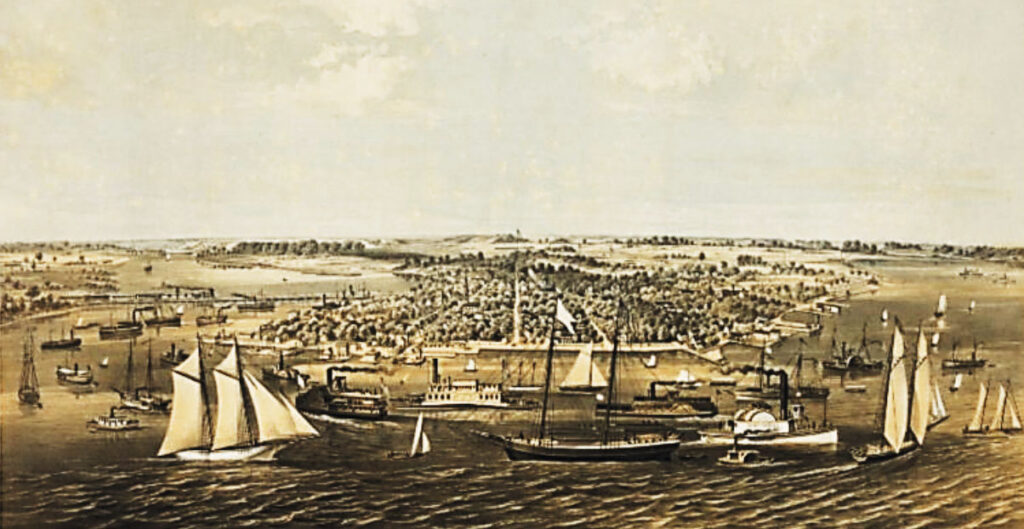by Edward Ellis, Special Correspondent
At the beginning of the War Between the States, United States Secretary of the Navy Gideon Welles made a list of the Southern ports he wanted to be blockaded or seized. Number Three on the list: New Bern, N.C.
Today, it’s hard to fathom that New Bern once rivaled ports like New York, Baltimore, Charleston, and Savannah. Nevertheless, in the 1800s, the former capital of North Carolina boasted the state’s second-largest port after Wilmington.
And a rich port it was. With huge volumes of timber and naval stores arriving from its eastern river shores and traditional farm crops and produce barged from the west, the Neuse and its long tributary, the Trent, were great watery highways of commerce.
The Neuse and Trent carried valuable goods to New Bern from a ten-county area of eastern North Carolina. Research during the writing of our book, New Bern History 101, revealed that these ten counties produced in the mid-1800s four times the raw goods of the famous Shenandoah Valley of Virginia. And the Shenandoah was nicknamed “the breadbasket of the Confederacy.” It’s little wonder New Bern was so high on Gideon Welles’s list.

Rising west of Raleigh and 275 miles in length, the Neuse River empties into Pamlico Sound. It is the longest river completely contained in the state. Below New Bern, it becomes one of the widest in the country at four to six miles across and even more at the imaginary lines that separate the river from the sound.
Settlement along the river by European immigrants was underway by 1700. Archeologists tell us native people had already been here for as much as 14,000 years.
Today, fishing, boating, sailing, and other water sports are the major activities though the river still hosts commercial tugs and barges hauling loads like fuel, fertilizer, and mining products.

